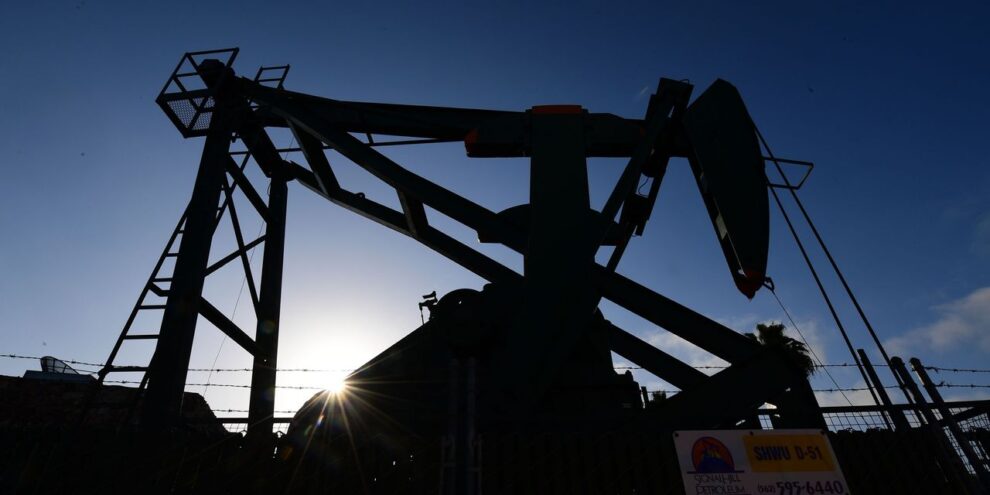
Oil futures settled lower Thursday, as traders fretted over a lower demand forecast for this year, putting an end to the longest streak of session price gains in more than two years.
“Demand conditions remain a source of concern for the current market, as the recent bullish trend appears heavily reliant on a strong and steady recovery moving through the year ahead,” said Robbie Fraser, manager of global research and analytics at Schneider Electric, in a daily report.
“The downside risk to that outlook remains a key source of concern,” he said, with the International Energy Agency (IEA) offering the latest warning that the current recovery remains fragile.
West Texas Intermediate crude for March delivery CL.1, -1.33% CLH21, -1.33%, the U.S. benchmark, fell 44 cents, or nearly 0.8%, to settle at $58.24 a barrel on the New York Mercantile Exchange. WTI had gained ground in each of the last eight sessions.
April Brent crude BRN00, -0.54% BRNJ21, -0.54%, the global benchmark, lost 33 cents, or 0.5%, at $61.14 a barrel on ICE Futures Europe after a nine-day winning streak.
U.S. and global benchmark crude prices on Wednesday had logged their longest streak of session gains since January 2019, according to Dow Jones Market Data.
Early Thursday in a monthly report, the Organization of the Petroleum Exporting Countries trimmed its forecast for a rebound in global oil demand this year. OPEC said it expects appetite for crude to rise by 5.8 million barrels a day in 2021, down 100,000 barrels a day from its January forecast, to average 96.1 million barrels a day.
Earlier, the IEA, in its own monthly report, said that a recovery in demand will outstrip rising output in the second half of the year to prompt “a rapid stock draw” of the glut of crude built up since the outbreak of the coronavirus.
However, the IEA said it remains “cautious about the outlook for oil demand” in the first quarter, in part due to new COVID variants, and has downwardly revised its first quarter forecast by 100,000 barrels per day, with demand now expected to decline by 110,000 barrels per day year-over-year, to 93.7 million barrels per day.
The Energy Information Administration said in a monthly report issued Tuesday that it expects global consumption of petroleum and liquid fuels to rise by 5.4 million barrels per day in 2021. That forecast was down 200,000 barrels from the January forecast.
Petroleum product prices, meanwhile, also finished lower Thursday, with March gasoline RBH21, -0.48% down 0.2% at $1.6502 a gallon and March heating oil HOH21, -1.34% losing 0.9% at $1.7446 a gallon.
Still, crude prices have climbed so far this year, with those gains attributed to optimism over the rollout of COVID-19 vaccines and, more recently, to expectations Congress will enact a round of additional relief spending closer in size to President Joe Biden’s $1.9 trillion proposal to boost the economic recovery.
At the same time, OPEC and its allies, a group known as OPEC+, have largely stuck to output curbs. In addition, Saudi Arabia unilaterally cut production by 1 million barrels a day for February and March.
“In view of the many restrictions, the U.S. oil market overall is in a good state” wrote analysts at Commerzbank, in a Thursday note. “In our opinion, however, the price-supportive factors are already sufficiently reflected in today’s high prices, meaning that even a slight increase in risk perception among investors should put oil prices back under pressure.”
In related news Thursday, the U.S. Energy Department said it intends to sell 10.1 million barrels of crude oil from the nation’s Strategic Petroleum Reserve, as part of previously approved sales plans. Bids must be received by Feb. 24 and deliveries will take place in April and May, it said.
Also on Nymex Thursday, prices for natural gas settled lower after Wednesday’s gain of nearly 3%.
The U.S. Energy Information Administration reported on Thursday that domestic supplies of natural gas declined by 171 billion cubic feet for the week ended Feb. 5. On average, the data were expected to show a drop of 175 billion cubic feet for the week, according to analysts polled by S&P Global Platts.
March natural gas NGH21, -1.92% fell 1.5% to $2.868 per million British thermal units.




